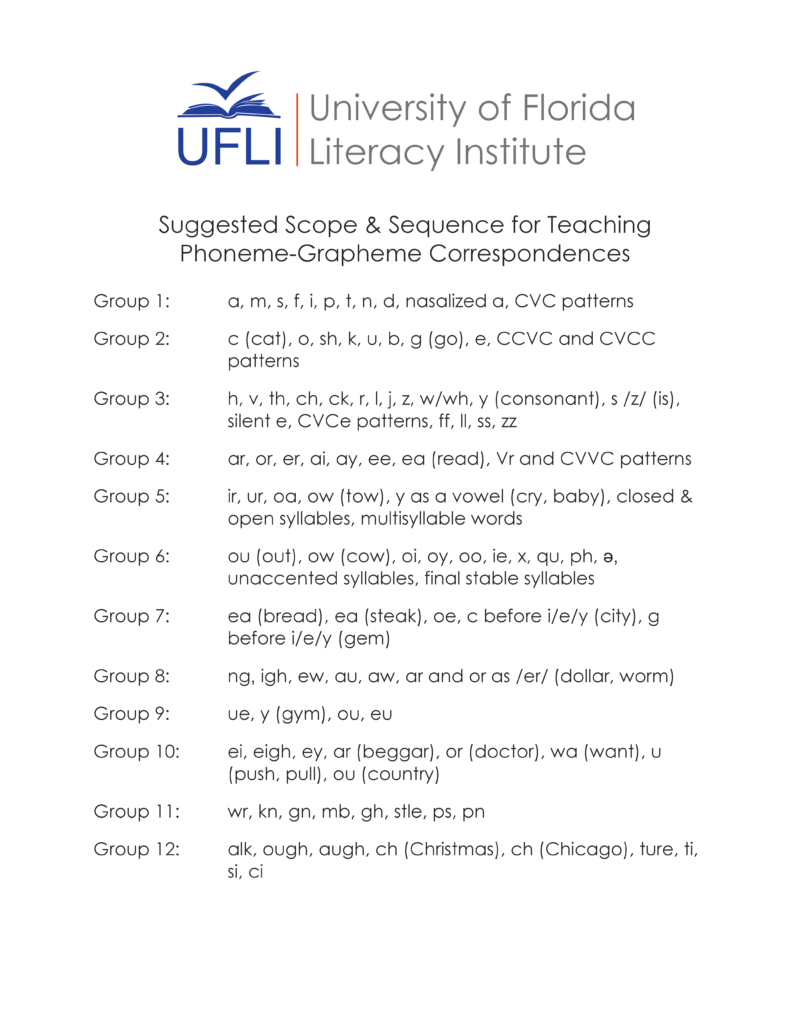The Science of Reading: First Steps
This blog post is part of a Science of Reading series. This post is written by Lindsay Kemeny.
The term “science of reading” has become a buzzword recently and there is often confusion over what the term means. Sometimes teachers think this refers to a specific curriculum, program, or method, but the term actually refers to a large body of research on reading. It encompasses thousands of studies on reading. Perhaps my favorite explanation of the science of reading comes from Louisa Moats who explains, “First, the body of work referred to as “the science of reading” is not an ideology, a philosophy, a political agenda, a one-size-fits-all approach, a program of instruction, or a specific component of instruction. It is the emerging consensus from many related disciplines, based on literally thousands of studies, supported by hundreds of millions of research dollars, conducted across the world in many languages. These studies have revealed a great deal about how we learn to read, what goes wrong when students don’t learn, and what kind of instruction is most likely to work the best for the most students.”
The Science of Reading: Where it Started

What’s devastating is that this information is not new. In fact, a pivotal report on reading called The National Reading Panel (2000) was published back in the year 2000. Instead of fully embracing the research, many professors, departments of education, publishers, and authors ignored it and continued to promote resources and methods that were not aligned with research. Even though there were many reading experts, cognitive scientists, researchers and more who were expressing the science behind reading acquisition, this information was not filtering down to those who needed it most: teachers.

The Science of Reading: Where it is Now
Perhaps a major contributor to why the science of reading is gaining so much traction recently is APM reports reporter: Emily Hanford. If you haven’t listened to her podcasts on reading, I highly recommend them! Start with Hard to Read, then Hard Words, and then At a Loss for Words. I recommend the podcasts over reading the articles.
My journey to learn about the science of reading began about 3 years ago when my 7 year old son was diagnosed with severe dyslexia and depression (you can read more about it here). As I began to research what dyslexic students need in order to read, it led me to learn what everyone needs in order to read. I was shocked, angered, and disgusted! Why had I never been taught these things? Even worse, I had been taught ineffective methods for teaching reading. I felt guilt over the students I could have helped if I had been taught these things in college! I began to apply the things I was learning with my son and as his reading steadily improved, so did his self-esteem. I witnessed his wounds healing through the power of effective reading instruction. I know that sounds dramatic, but he had literally hit rock bottom and I learned first-hand how the ability to read has such a powerful impact on a child’s life. Please read about his journey with depression and dyslexia here.

The Science of Reading: 8 Simple Steps You Can Take
It can be overwhelming to overhaul your reading instruction, but you don’t need to do everything at once. Here are some simple steps you can take to begin your journey into the science of reading.
1. Learn
Begin to gradually learn all you can about the science of reading. You won’t learn everything at once and that’s okay. It’s a process. I have been steadily studying for 3 years and I am still constantly learning new things! Read books, listen to podcasts, watch webinars, participate in professional development trainings. An easy place to start is with a PD training that I created for my master’s program. I feel strongly that every student deserves a teacher knowledgeable about the science of reading, so I am offering these for free. You can go to this website and if you are on a mobile device, make sure to click the drop down menu in the top left corner to access all the different modules. Please know that this is only meant to be the beginning of your journey…there is so much more to learn! I highly recommend going to this page for a list of some of my favorite, well-respected resources for learning more about the science of reading.

2. Stop using the 3 cueing system
You may not be familiar with this term, but the cute and popular “beanie baby” reading strategies are based on the 3-cueing system. This is when you are asking students to figure out a word by looking at the picture, the first letter of the word, skipping the word and then figuring it out by using context, etc. These are guessing strategies not reading strategies. There is no research to support these. In fact, what the research tells us is that these are things that poor readers do, not good readers. So when we teach our students these strategies, we are literally teaching them to read like a struggling reader and we are inhibiting the process that is necessary for them to store these words in their memory. We want our students to keep their eyes on the words, to process each letter, and to decode from left to right. No guessing!
3. Replace predictable texts with decodable texts
The only way for a brand new reader to “read” a predictable text is by using the 3 cueing strategies described above. This creates ineffective habits that are hard to break and will ultimately lead to reading failure. What happens when there are no more pictures and the sentence structure and vocabulary are more complex? Some time around 3rd or 4th grade the strategies that held these students afloat will fail them.
Replace those repetitive, predictable texts with decodable books that are filled with sounds and words they have been taught and are able to decode. These generally include all the F&P levels A-D. Also, remember that decodable books are like training wheels…they are temporary and you want to get rid of them as soon as you can. Once students have a solid foundation in phonics, you can move to regular trade books.

4. Teach phonics explicitly and systematically
One of the big differences between balanced literacy and structured literacy (instruction aligned with the science of reading) is the approach to phonics instruction. Balanced literacy tends to sprinkle phonics here and there, mostly addressing certain concepts as they come up in the errors students make within the texts they are reading. But there is a lot of research to support a systematic and explicit phonics approach. We want to be proactive and move through a set scope and sequence that leaves nothing to chance. If you don’t have a solid phonics curriculum, make finding or creating one a top priority. There is no one correct sequence of skills, but in general, look for a sequence that starts with simple concepts and moves to more complex ones. You can find a sample sequence here. Then make sure to plan your phonics lessons to follow an I do, we do, you do format.

5. Encourage phonemic awareness
One of the most common sources of reading difficulties is poor phonemic awareness. Make sure to spend time on this concept in your classroom! You can embed this practice within your phonics lesson, and you can also spend a few minutes before your lesson on these skills. Research supports about 6 minutes a day on phonemic awareness activities.
6. Build vocabulary and background knowledge
Continue to surround your students with beautiful texts, conversations, and read-alouds. We never want to neglect the language comprehension side of reading instruction. Reading aloud to students is a wonderful way to expose them to grade level content and vocabulary. We can beef up this instruction by explicitly teaching vocabulary words and being intentional about the concepts and subjects we teach in connection with our books.

7. Create a support network
It’s hard to do all these things alone! Reach out to others at your school or district for help and support. Take a quality training together, start a LETRS cohort, or create a science of reading book club. There is also a wonderful online community of educators at various stages of learning.

8. Have grace
It’s easy to become discouraged, defensive, overwhelmed or guilty for the methods you have used in the past. I know because I have been there. But there is an important phrase that is often used in the science of reading community: When we know better, we do better. Try to show compassion for yourself and others! Don’t dwell on past mistakes, but use these feelings to propel yourself forward and do the best you can for your current and future students! They need you.
In Conclusion
I wrote my first blog post on the science of reading over two years ago. I was so frustrated with what I had not been taught and wanted to shout what I was learning from the rooftops! I am so excited that the science of reading movement is FINALLY moving forward. Teaching our students to read is one of the most powerful gifts we can give them! Try not to be overwhelmed as you begin to dive into all the resources available. Just put one foot forward at a time and know that you are changing lives with each step you take!

Thank you so much Lindsay for helping us with an amazing kickoff to our Science of Reading series here on the Little Minds at Work site. Follow along with Lindsay’s future endeavors on her website, The Learning Spark. Be sure to catch all future blog posts in the series by viewing THIS tab. Thanks so much for joining in and see you again soon! – Tara West

Thank you so much for this valuable resource!!! I am reading the Shifting the Balance book, but going to Lindsay’s modules and listening has helped it make even more sense! I am so excited to share this with my fellow teachers and admin( maybe they will listen to me)!
That is so great to hear! I agree the modules were amazing!
I have recently starting my LETRS training course and have been quite surprised that this is the same information I learned about 20 years ago when piloting a new reading program in my district. We were actually given a copy of The National Panel on Reading Report, which I still have to this day. We read the entire thing and were shown how to apply these concepts in our reading instruction. As I read this post, I found many of the same ideas that are being taught in my LETRS course, actually word for word phrases being used. I find it all quite interesting.
So true! We know “circles back” is a common phrase for education. However, it kind of stings that this one didn’t come back around quicker! Have an amazing packet to school!
Lindsay, such great information in this article. I’ve also listened to all the podcasts you linked as well as have gone through your PD modules. I can’t get enough! Thank you for sharing and thank you Tara for spreading the word.
Good one. Thank you for sharing. informative and useful. The first into education for kids is a big task for mothers. If you’re looking for an Online playschool with all the activities and teaching, Check Vivid Oranges for the best playschool online. It provides expert teaching for kids online.
Love and amazing people
NCLEX CERTIFICATE FOR SALE ONLINE
My district uses F&P as our literacy curriculum, however, this year they have mandated that all staff complete the LETRS training. I’m a first year 3rd grade teacher and all of my students have major gaps when it comes to phonics and fluency. I’m so overwhelmed trying to provide meaningful instruction for my students with a poor curriculum and zero support from admin! SOS!! I also started late in the year (mid-October) and everyone on my team uses different resources for teaching phonics. We have reading interventionists who I have asked for help but their time is “protected” so they can focus mainly on K-2. Any advice would be greatly appreciated!
I know I am responding to an older post; however, I will go ahead since it may benefit someone else. Since it is now spring, take your little ones outside and practice colors, shapes, numbers, letters, writing, etc. using sidewalk chalk. It never fails to entertain and teach at the same time. Sounds like you’re doing a great job with your (now) 5 year old, just don’t be sucked in to pressuring her to handle more than she is ready to handle.
all the technical KINGDOM777 solutions and staff we need for 에볼루션 카지노 operators who provide world
I appreciate your article however I found the information on the three cueing systems inaccurate. You
The article lists 1. Look at the picture 2. Look at the first letter and 3. Skip the word and use context clues as examples of the three cueing system. Those are examples of “strategic actions.” The three cueing system asks 1. Does it look right? (Children are taught to move left to right using visual information…decoding) 2. Does it sound right? 3. Does it make sense? Children are taught to use all three Meaning, structure, and visual together to process and decode text.